Decision Aids / TEX*A*Syst / Reducing Contamination by Improving Milking Center Wastewater Treatment
B.L. Harris, D.W. Hoffman and F.J.Mazac, Jr.
- Do you dispose of milking parlor waste (manure, feed solids, hoof dirt) or milk house wastewater (bulk tank rinses or cleaning operations) on your property?
- Do you apply dairy wastewater without considering the soil nutrient levels or types of crops to be grown?
- Do you allow dairy wastewater to run off quickly and uncontrolled during field applications?
- Do you rarely or never harvest crops from acres where dairy wastewater has been applied?
- Do you continue to apply dairy wastewater to areas already saturated by previous applications?
- Is your slow dairy wastewater system located on sandy soils?
- Is your dairy wastewater system located where bedrock or the top of the water table is less than 12 feet from the soil surface?
If these questions create doubt about the safety of your management practices, this publication will provide helpful information.
Milking Center Wastewater Treatment
Dairy wastewater is usually considered a dairy sanitation problem. If not carefully managed, however, dairy wastewater can contaminate both ground water and surface water. The amount of wastewater generated varies with milking preparation, equipment use, and the number of cows.
Milking center wastewater is contaminated with organic matter, nutrients, chemicals and microorganisms. Poorly designed or mismanaged waste disposal systems can contaminate water with ammonia, nitrate, phosphorus, detergents and disease-causing organisms. These contaminants can be carried directly to a well or cause ground water or surface water pollution. Surface water also can be affected by manure, milk solids, ammonia, phosphorus, and detergents. Wastewater from the dairy milking center is made up of waste from the milking parlor (manure, feed solids, hoof dirt, bulk tank rinse water and detergent used in cleaning), and should be collected in a waste storage facility.
From an environmental perspective, delivering milking center wastewater to a waste storage facility makes the most sense. Discharging it from channels, lagoons, ditches, pipes or irrigation systems is illegal. It is also illegal under Texas Natural Resources Conservation Commission (TNRCC) regulations to allow wastewater to be discharged off your property.
A glossary at the back of this publication will assist with terminology. This publication covers the following topics:
- Combining wastes
- Application methods
- Slow surface infiltration
Combining Wastes
When milking center wastes are combined with manure a common disposal system can be used for both types of waste. A liquid manure storage facility, properly constructed and sized, can store wastes until they can be applied at the right time to the right sites (see Figure 1).
The best disposal method, environmentally, is to apply milking center wastes with manure to fields, at rates that do not exceed crop needs for nitrogen. However, the producer must be careful to keep soil phosphorus levels from becoming excessive.
Milking center wastewater combined with feedlot runoff or leachate (from manure storage) can be stored in a detention pond. The contents of the pond can be applied to fields when conditions are appropriate.
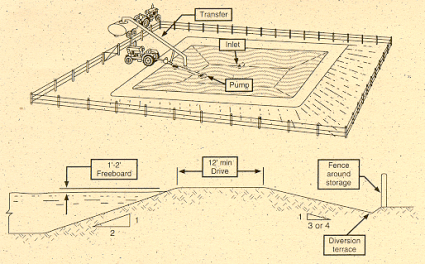
Figure 1a. Earth basins for manure and dairy wastewater storage. Source: Diary and Equipment Housing Handbook, MWPS-7, Midwest Plan Service, Ames, Iowa.
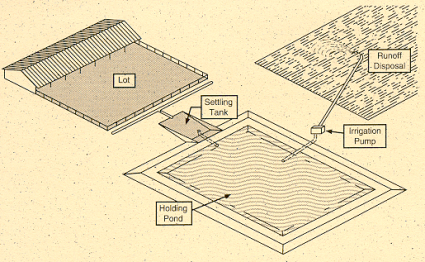
Figure 1b. Detention pond for storage of dairy wastewater and livestock yard runoff. Source: Dairy and Equipment Housing Handbook, MWPS-7, Midwest Plan Service, Ames, Iowa.
Application Methods
Any application of wastes to the soil surface should be based on the nutrient needs of the crop to be planted, as determined by a soil analysis. Nutrients in waste reduce the need for commercial fertilizer.
Dairy wastewater can be applied to cropland and pastures by irrigation equipment. Or, pipes with sprinklers can be permanently installed to spray wastewater over a certain area consistently. Determine the application rate by:
- the soil’s ability to absorb the liquid in the wastes; and
- the amounts of nutrients that can be used by vegetation, with periodic harvesting of the crop produced.
Do not saturate any area with wastewater because that can allow rapid percolation of contaminants to ground water or runoff to surface water.
Milking center wastewater applied to cropland at low rates poses little danger to ground water because it is filtered by the soil and used by plants. To maximize the efficiency of this system, harvest the crop or other vegetation periodically and feed it to livestock, if appropriate, or use it as bedding. If the crop is left on the ground, nutrients may still move into ground water. Forest, windbreak or wood lot application may also be suitable, in which case harvesting is not necessary.
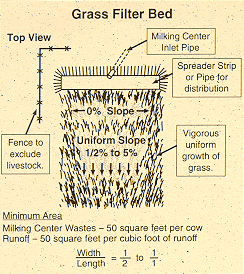
Figure 2. Surface flow (overland). Source: Dairy Manure Management – Handling Milk Center Wastes, Northeast Dairy Practices Council 27.B. October 1977.
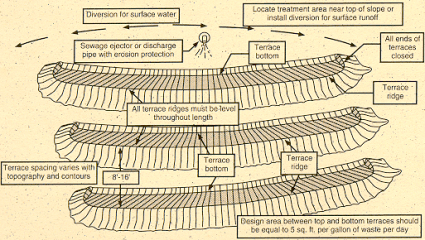
Figure 3a. Contour terraces. Source: Treatment and Disposal of Milkhouse and Milking Parlour Wastes, D.W. Bates and R.E. Machmeier, University of Minnesota Agricultural Extension Service, M-159-1977.
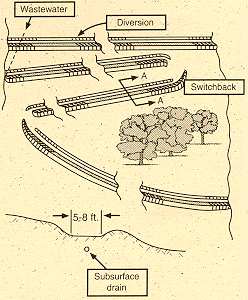
Figure 3b. 1-2% infiltration terrace. Source: Milking Center Wastewater Disposal Manure Management for Environmental Protection, Document DM7, Pennsylvania Department of Environmental Resources, October 1986.
Wherever wastewater is applied, the retention structure must be large enough to handle several days’ production of milking center wastes so that no application area becomes saturated. Alternating between two waste disposal areas is a good way to allow an area adequate time to dry out.
Evaluation Table
The following table can be used to help agricultural producers and rural homeowners determine the risk level that drinking water on a given property will become contaminated as a result of the management practices being used. For each category listed on the left that is appropriate, read across to the right and circle the statement that best describes conditions on your land. Allow 15 to 30 minutes to complete the worksheet, and skip any categories that do not apply. Note any high risk ratings and take appropriate actions to remedy them. Strive for all low or low-moderate risk ratings.
Milking Center Wastewater Treatment: Assessing Drinking Water Contamination Risk
Glossary
Aerial application: Method of field application using pressurized sprinkler nozzles to broadcast wastewater in droplet form to the soil.
Field application: Application of wastewater to croplands and pastures by irrigation ditches or equipment.
Slab separator: A type of settling tank used for removing fine particles and sand from wastewater prior to pumping into a holding tank or lagoon.
Slow surface irrigation: Application of wastewater to level or gently sloping fields to provide nutrients for actively growing crops.
Soil permeability: The quality that enables the soil to transmit water or air. Fine (heavy) soils such as clay are slowly permeable. Coarse (light) soils such as sand are highly permeable.
Solids separator: A screen apparatus over which milkhouse wastewater slurry is passed, allowing liquids and fine particles to pass through while retaining larger solids.
Contacts and References
Who to call about certain problems or questions:
- Potential ground water contamination from your milking center wastewater: Your county Extension agent or your local Natural Resources Conservation Service or Texas State Soil and Water Conservation Board.
- Financial assistance for the cost of new waste handling facilities: Your county Consolidated Farm Service Agency or Natural Resources Conservation Service or Texas State Soil and Water Conservation Board.
- Review of construction plans: To be sure that water quality regulations are being met, contact the Texas Natural Resources Conservation Commission.
- Securing a permit: Before committing to a new facility, contact the Texas State Soil and Water Conservation Board.
- Designing a wastewater treatment system: The Natural Resources Conservation Service, private consultants, or the Agricultural Engineering Department, Texas A&M University, College Station.
